#stedelijk van abbemuseum eindhoven
Explore tagged Tumblr posts
Text

Jan Vercruysse, Labyrinth & Pleasure Garden n°6, [1994-2001], 1994 [Van Abbemuseum Eindhoven. © Jan Vercruysse]
#graphic design#art#drawing#geometry#pattern#labirinto#jan vercruysse#stedelijk van abbemuseum#stedelijk van abbemuseum eindhoven#van abbemuseum eindhoven#m hka ensembles#1990s#2000s
37 notes
·
View notes
Photo
Born in 1939 in Globe, Arizona, Douglas Wheeler attended the Chouinard Art Institute, Los Angeles (now California Institute of the Arts, Valencia) in the early 1960s. Long associated with the so-called Light and Space artists working in Southern California in the 1960s and 1970s, Wheeler is best known for his immersive installations produced through the architectural modification of the space of an entire room. In these works, controlled applications of light, and sometimes sound, produce a sensate impression of infinite space. By dematerializing the architecture, Wheeler transforms these rooms into abstract worlds.
Wheeler began his career in the early 1960s as an abstract painter of white paintings subtly inflected with color. He first incorporated light as a medium in 1965 by attaching neon elements to his canvases—works that seem to glow with a self-contained inner light. Wheeler gradually abandoned paint as a medium to produce fabricated “light paintings” and “light encasements,” large, vacuum-formed Plexiglas squares edged inside with neon tubing. Installed in controlled environments—all-white rooms that have been modified and darkly lit—the light-rimmed forms appear to float in space. With his Light Walls, first exhibited in 1969, Wheeler expanded this concept to an architectural scale, transforming a room wall through the use of neon lights embedded within the floor, walls, and ceiling. And in the Infinity Environments that he inaugurated in 1975—for example, SA MI DW SN 2 75—an entire room is dematerialized; a visitor has the experience of entering a seemingly limitless white void, in which light itself assumes an almost palpable quality. Wheeler has also conceived installations that deploy acoustic elements in order to produce certain experiences. In PSAD Synthetic Desert III, initially described in a 1968 drawing and first realized at the Solomon R. Guggenheim Museum in 2017, a near-total suppression of sound contributes to an immersive environment that replicates the optical and acoustic sensation of distance in the Painted Desert in Arizona.
Wheeler’s first solo exhibition opened at the Pasadena Art Museum in 1968 and was followed by others at the Ace Gallery, Venice, California (1970); Galerie Schmela, Düsseldorf (1970); and Galleria Salvatore Ala, Milan (1975). More recently, he has had solo shows at FRAC Lorraine, Metz, France (2012), and Palazzo Grassi, Venice (2012). Wheeler’s work has been presented in numerous group exhibitions since the 1960s, including at the Stedelijk Museum Amsterdam (1969); Stedelijk Van Abbemuseum, Eindhoven (1969); Tate Gallery, London (1970); P.S.1 Contemporary Art Center (now MoMA PS1), New York (1976); Venice Biennale (1976); Los Angeles Museum of Contemporary Art (1983, 1986, 1995, and 2003); Louisiana Museum of Modern Art, Humlebæk, Denmark (1997); Guggenheim Museum Bilbao (2000); Moderna Museet, Stockholm (2008–9); and Museum of Contemporary Art San Diego (2011–12). The artist lives and works in Los Angeles and Santa Fe. https://www.guggenheim.org/artwork/artist/doug-wheeler

Doug Wheeler @ David Zwirner
190 notes
·
View notes
Text
Gagosian Basel to Present an Exhibition of Paintings and Drawings Produced by Arakawa over a 20-Year Period
Gagosian Basel to Present an Exhibition of Paintings and Drawings Produced by Arakawa over a 20-Year Period Opening November 25, 2021

I wanted to change art, to change life—I became a radical. —Arakawa BASEL, November 15, 2021—Gagosian is pleased to present Waiting Voices, an exhibition of works on canvas and paper by Arakawa produced between 1964 and 1984. This is the artist’s first exhibition with the gallery in Basel. Arakawa (1936–2010) was one of the earliest international pioneers of Conceptual art, and a founding member of the Japanese avant-garde collective Neo Dada. Working in painting, drawing, printmaking, and architecture, he described himself as an “eternal outsider” and an “abstractionist of the distant future.” After relocating from Tokyo to New York in 1961, where he encountered Marcel Duchamp and many of the French artist’s contemporaries, he began producing “diagram paintings,” combining schematic images with text in a study of epistemology and perception. In 1962, Arakawa met his future wife and collaborator, the poet, writer, and philosopher Madeline Gins. From 1963 to 1973, the couple collaborated on an eighty-painting suite, The Mechanism of Meaning, and in the 1990s they worked on a theory of “procedural architecture” through which they aimed to extend the lives of a building’s occupants. Waiting Voices features paintings and drawings produced by Arakawa over a twenty-year span. A Diagram of Imagination (1965), Separated Continuums (1966), and A Couple (1966–67) are among several paintings from the mid-1960s that represent architectural space. The earliest of the three shows part of a simple town plan layered over a grid; the others focus on interior space. In Separated Continuums, coordinates on a grid—featureless apart from two colored lines—are labeled with the names of household objects and fixtures. A Couple is, for the most part, similarly schematic, but Arakawa has added renderings of windows to the graphic marks as well as stenciled words and numbers that denote the contents of the room. The painting’s diptych format also hints at a narrative progression and allows viewers to imagine the unseen titular duo. In Untitled (Voice Inoculations) (1964–65), a diagram of a cube is labeled with words—some of them stenciled backward—that conjure an ambiguous play on orientation, scale, and other attributes of an object. Hard or Soft No. 3 (1969) also features text, which in this case informs the viewer—with Arakawa’s characteristic deadpan wit—that the composition’s meandering arrows “indicate almost nothing” and that the accompanying numbers may be rearranged in any order. The two-part Waiting Voices (1976–77) pairs a grouping of geometric forms—reminiscent of the “suitors” in Duchamp’s The Bride Stripped Bare by Her Bachelors, Even (The Large Glass) (1915–23)—with an abstruse marginal text. Also on view are several works on paper, including Study for “Blank” No. 2 (1981) and Study for the “Sharing of Nameless” No. 3 (1983–84), both of which feature plan-like networks layered over words, arrows, and, in the later example, a grid of variegated tones. Blending coded signification with a shifting ambiguity, they build bridges from Arakawa’s imagination to create an art that is fully realized only in the mind and body of the viewer. Shūsaku Arakawa, known simply as Arakawa, was born in 1936 in Nagoya, Japan, and died in 2010 in New York. Collections include the Metropolitan Museum of Art, New York; Museum of Modern Art, New York; Centre Pompidou, Paris; National Museum of Art, Osaka, Japan; and National Museum of Modern Art, Tokyo. Exhibitions include Peintures de Arakawa, Palais des Beaux-Arts, Brussels (1964); Stedelijk van Abbemuseum, Eindhoven, Netherlands (1966); Peintures Récentes, Musée National d’Art Moderne de la Ville de Paris (1970); Minneapolis Institute of Art (1974); Recent Prints, Museum of Modern Art, New York (1974); Stedelijk Museum, Amsterdam (1978); The Mechanism of Meaning, National Museum of Art, Osaka, Japan (1979); Constructing the Perceiver—Experimental Works, National Museum of Modern Art, Tokyo (1991); Reversible Destiny—Arakawa/Gins, Solomon R. Guggenheim Museum, New York (1997); and Funeral for Bioengineering to Not to Die—Early Works by Arakawa Shūsaku, National Museum of Art, Osaka, Japan (2010). Arakawa represented Japan at the 35th Biennale di Venezia (1970) and was included in Documenta 4 (1968) and Documenta 6 (1977). In 2017, Gagosian announced the gallery’s representation of the artwork of Arakawa on behalf of the Estate of Madeline Gins and the Reversible Destiny Foundation, a foundation established by Arakawa and Gins. ARAKAWA Waiting Voices November 25, 2021–January 22, 2022 Rheinsprung 1, Basel _____ Arakawa, Waiting Voices, 1976–77, acrylic, graphite, marker, and varnish on canvas and linen, in 2 parts, overall: 70 × 96 inches (177.8 × 243.8 cm) © 2021 Estate of Madeline Gins. Reproduced with permission of the Estate of Madeline Gins
9 notes
·
View notes
Text
Als iemand mij vraagt wat mijn favoriete geur ter wereld is? Gras. Versgemalen gras. Op een very close tweede plek staat de geur van naaldbomen. What can I say, de vegan houdt van groen. Schokkend.
Tijdens mijn sollicitatie bij Lush jaren geleden moesten we onszelf omschrijven met een geur. Het hele assortiment aan geuren lag voor ons klaar. Ben ik meer een patchoeli-achtige Karma, een pepermuntige Dirty of een frisse Sun? Op dat moment leerde ik voor het eerst hoeveel geur eigenlijk over ons zegt. Waarom identificeer ik me meer met een citroen dan met een sinaasappel? Waarom walgt de een van vanille en zweert de ander bij de geur van rozen? Of misschien ben je zoals ik en vind je het allebei smerig.
Gisteren sprak ik met Jorg Hempenius van Iscent over geuren. We hadden wel uren kunnen doorpraten over het olfactorisch zintuig. (Maar ja, helaas moet er ook nog gewerkt worden.) In het bijzonder hadden we het over hoe geur invloed heeft op het gevoel van thuis. Met zijn bedrijf (waar hij het brein - nee, de neus achter is) creëert hij unieke geuren voor diverse partijen. Zo ontwikkelde hij bijvoorbeeld een anti-gourmetgeur-spray, een signature scent voor het Conservatorium Hotel en geuren bij kunstwerken in het Stedelijk Museum Amsterdam en Van Abbemuseum Eindhoven.
Geuren kunnen een enorme hoeveelheid herinnering losmaken - zowel positief als negatief. Er zijn zelfs studies die bewijzen dat emoties tot wel 75% door geur kunnen worden getriggerd. Ik ken het wel, hoor. Voor mij is het de geur van Schiphol. Jorg vroeg me die geur te omschrijven, maar ik heb geen idee. Het is een soort van steriele lucht, met een vleugje muffigheid die uit de treintunnel onder de aankomsthal komt. Het is een geur die mij meteen terugbrengt aan de vele, vele vluchten die ik tussen Amsterdam en Londen Luton aflegde op zoek naar mijn partner die daar toen woonde. De reis naar Rusland die ik in 2013 maakte. De vrienden uit Finland en Duitsland die ik bij de gate opwachtte. De geur van Schiphol herinnert me aan al die goede tijden die ik met hen heb beleefd, de stukken van de wereld die ik heb gezien, de uren wachten voor de bagage- en paspoortcontrole en de vele uienringen die ik bij de Burger King heb gegeten.
Schiphol heeft een geur die ik associeer met reizen en met avontuur. Maar welke geur is voor mij thuis? Misschien de geur van de hyacinten die nu naast me staan. De geur (stank…) van Henk. De geur van de havermout die ik bijna dagelijks eet. De geur van Steven’s huis die dagen in mijn haar blijft hangen als ik bij hem ben geweest. De geur van de Lipton Ice Tea waarvan mama wekelijks liters verslindt. De geur van de kattenbak als ik Antje en Baby weer eens bezoek. Maar welke geur in het bijzonder voor mij thuis betekent, is de geurcombinatie van lauw bier (en dat terwijl ik niet eens drink), platgetrapt gras en modder. Festivals. Dagenlang zonder te douchen in een zwetende weide rond rennen. Maar ook de mooiste herinneringen ooit maken met mijn vrienden. De geur van de moshpit en het stof in mijn uitgeputte longen. Ja, dat is voor mij thuis.
1 note
·
View note
Photo

Doug Wheeler, Eindhoven Stedelijk Van Abbemuseum Installation (Environmental Light) (1969). Installation view: ‘The Panza Collection’, Hirshhorn Museum and Sculpture Garden, Washington, D.C. (2008–2009). Hirshhorn Museum and Sculpture Garden, Smithsonian Institution, Washington, DC. Joseph H. Hirshhorn Purchase Fund, 2007, Panza Collection, Gift, 1991.© Doug Wheeler. Courtesy Hirshhorn Museum and Sculpture Garden, Smithsonian Institution. Photo: Lee Stalsworth.
#doug wheeler#installation#hirschhorn museum and sculpture garden#smithsonian institute#david zwirner#ocula#ocula art#ocula gallery
18 notes
·
View notes
Photo
beetleinabox:
Francis Bacon, Fragment of a Crucifixion, 1950 (Stedelijk Van Abbemuseum, Eindhoven).
Thomas Bernhard writes:
“Our greatest pleasure, surely, is in fragments, just as we derive the most pleasure from life if we regard it as a fragment, whereas the whole and the complete and perfect are basically abhorrent to us. Only when we are fortunate enough to turn something whole, something complete or indeed perfect into a fragment, when we get down to reading it, only then do we experience a high degree, at times indeed a supreme degree, of pleasure in it.”
(Thomas Bernhard, Old Masters, trans. Ewald Osers (Chicago: University of Chicago Press, 1989), p 18).

86 notes
·
View notes
Photo

Wim Crouwel / Stedelijk Van Abbemuseum Eindhoven / Hiroshima /... https://ift.tt/2mav1q2
16 notes
·
View notes
Text
Remembering Wim Crouwel (1928–2019)
TRIBUTE
Author: Ellen Lupton, Senior curator of contemporary Design
Wim Crouwel (1928–2019) was a giant figure in the history of graphic design. This tall, elegant man who always dressed for the future produced an astonishing body of work that is at once functional and experimental, objective and personal. His contribution has special importance for museums. A pioneer of graphic identity, he defined—and blasted open—the possibilities of visual communication within the unique setting of the art museum. He started his career in 1952 as an exhibition designer and soon began working with the van Abbe Museum in Eindhoven, where he used grids and consistent typefaces to unify the institution’s publications and posters while illuminating a rich roster of content. As design director of the Stedlijk Museum in Amsterdam from 1963 through 1985, he used modern design to amplify the institution and interpret its content. He was director of Museum Boijmans van Beuningen in Rotterdam from 1985 to 1993.
Known as “Mr. Gridnik,” Crouwel embraced the grid as a tool for generating flexible systems and unexpected forms. He loved structure, and he sought to create letters, layouts, publications, and identity systems driven by an internal logic. He used the grid not to suppress creativity or enforce homogeneity but to release the creative mind of the designer with a tool existing outside the individual hand and mind. This viewpoint connected him with the conceptual and constructive art movements of his time as well as with the work of Josef Müller-Brockmann, Max Bill, and other Swiss modernists, whose books and ideas were crucial inspirations. Many of Crouwel’s museum posters are purely typographic, using text and letterforms to interpret a theme or subject. In Crouwel’s 1969 poster Visuele Communicatie Nederland (Visual Communications in the Netherlands), simplified letters are shaped by a vertical grid consisting of wide modules and narrow gaps. This abstract poster reflects Crouwel’s fascination with creating typefaces for low-resolution computer systems and his lifelong interest in generative design methodologies.
In addition to working in the cultural realm, Crouwel was an influential corporate designer. He cofounded the Amsterdam-based company Total Design in 1963, which became an international voice in multidisciplinary design for business. Asked by Design Culture magazine if the results of design should always be useful, he said, “This is wishful thinking. In reality, design is often not useful at all.” He believed in the innate value of human creativity and the freedom to think and make.
OBJECT OF THE DAY
Author: Gail Davidson
Originally published November 26, 2013
Poster, “Visuele Communicatie Nederland, Stedelijk Museum Amsterdam”, 1969. Wim Crouwel. Museum purchase from General Acquisitions Endowment Fund. 2009-13-1.
Visuele Communicatie Nederland (Visual Communications in the Netherlands) is one of designer Wim Crouwel’s best posters, created in 1969 for an Art Directors Club Annual exhibition at the Stedelijk Museum, Amsterdam. The Stedelijk Museum has been one of Crouwel’s major clients. Trained as a painter at the Minerva Academy in his home town of Groningen, and at the Kunsthijverheids onderwijs in Amsterdam, Crouwel started his professional life working on exhibition design for Bedroeders Enderberg, Amsterdam. He rapidly gravitated to the graphic design field, establishing his own firm in 1954. A turning point in his career came when he met the Swiss trained designers Karl Gerstner, Gerard Ifert, and Ernst Scheidegger, who impressed him with their rationalized design and typography, particularly the sans serif font Akzidenz Grotesk, a forerunner to Helvetica. From the Swiss model, he adopted the practice of the grid as a way of creating visual order: he later acquired from his colleagues the nickname “Gridnik.” His big break came in 1956 when Edy de Wilde, then director of the Van Abbemuseum, gave him an initial graphic design commission which resulted in a regular partnership with Crouwel to design all of the museum’s printed material. This client/designer relationship continued after de Wilde transferred as director to the Stedelijk Museum in 1963. For Crouwel, de Wilde was an ideal client as he permitted him to experiment with different fonts which he would create for each of his posters. From 1971, Crouwel was also providing graphic materials for the Fodor Museum in Amsterdam.
In the early 60s a series of discussions took place in the Netherlands and England, which included Crouwel and other Dutch designers, about the necessity of creating a multi disciplinary firm in the Netherlands, like those already established in the United States and in England, that could service a variety of commissions including industrial design, interior architecture, graphic design, etc. These dialogues resulted in the creation of the Associatie voor Total Design NV(abbreviated TD),whose members included (other than Crouwel) Friso Kramer, industrial designer; Benno Wissing, graphic and spatial designer; and Paul and Dick Schwarz, covering the business end. The aim of this firm was to develop and execute design ideas in all fields, based on a single vision. Standardization was the key concept, standardization of paper format, restricted choice of typeface (normally sans serif), clear pattern, and close regular spacing of words. This approach easily fit the needs of the corporate world, and clients included the cities of Gronigen and Rotterdam, IBM, many banks all over the Netherlands, as well as cultural institutions. As the partnership in TD began to break up in the late 1960s, Crouwel cut back on his involvement but remained as an advisor, and turned to teaching at the Technical University in Delft, becoming dean of the industrial design department from 1983 to 1985. From 1985 until 1993 he served as director of the Museum Boijmans Van Beuningen in Rotterdam. During this time he also taught at Erasmus University in Rotterdam as associate professor of art and cultural sciences.
It was as a member of TD that Crouwel (working with assistants) designed this poster. This work, like all of Crouwel posters, is based on a grid system (upon close inspection the pre-printed, gridded paper is visible; each line represents 1 cm). The letters of the major text are square, 4.5 x 4.5 cm, while the smaller letters in the subtext are also square, 1.3 x 1.3 cm.
When Crouwel was asked if design was pure problem solving or whether there was also room for personal expression, he responded, “Of course design is about problem solving, but I cannot resist adding something personal. A page should have tension.” It is the tension in this work, created by the florescent colors as well as the 3 1 3 spacing of the grey vertical bars, which make this poster unusual and compelling. Also tension-making is the experimental font (all lowercase), which Crouwel developed after considering the technical limitations of the first computer controlled typesetting machines in the early 1960s that only permitted dot matrix printing.
Poster Designed in Tribute to Wim Crouwel
Designer: Philippe Apeloig for London Design Museum
Poster, Wim Crouwel a graphic odyssey, 2011; Designed by Philippe Apeloig (French, b. 1962); France; screenprint on coated paper; 95 x 63.5 cm (37 3/8 in. x 25 in.); Gift of Philippe Apeloig; 2013-16-5
This poster was designed in conjunction with the 2011 exhibition Wim Crouwel: A Graphic Odyssey at the Design Museum, London, England. Philippe Apeloig, along with six other graphic design studios, was commissioned to produce a poster that employed the grid structure Crouwel devised for his now iconic Stedelijk Museum posters.
Apeloig drew from his experience as an intern in the 1980s at Crouwel’s firm, Total Design, to design the poster. He utilizes the framework of the grid itself and a simple color palette to create the text. Both the grid and reduced color palette are a tribute to Crouwel’s signature graphic design style. For this poster, Apeloig uses the grid to create text that appears to glide playfully all over the page, with black text punctuated by white dots emphasizing the diagonal pull of each word against the strict axis of the grid.
Lead photo: Courtesy Type Directors Club
from Cooper Hewitt, Smithsonian Design Museum https://ift.tt/2AAQXOG via IFTTT
4 notes
·
View notes
Text
Tino Sehgal
Tino Sehgal es un artista de ascendencia alemana e india, con sede en Berlín, que describe su trabajo como "situaciones construidas". También es considerado como un coreógrafo que baila para el ambiente del museo. Fecha de nacimiento: 1976 (edad 44 años), Londres, Reino Unido Educación: Universidad Humboldt de Berlín, Universidad Folkwang de las Artes Nominaciones: Premio Turner, Hugo Boss Prize
Venice Biennale (in 2005, together with Thomas Scheibitz). Sehgal had solo exhibitions at a number of important venues including the Stedelijk Museum, Amsterdam (2015); Museum für Moderne Kunst, Frankfurt (2007); the Institute of Contemporary Arts, London (2007, 2006, 2005); Kunsthaus Bregenz, Austria (2006), Kunstverein Hamburg (2006), Serralves Foundation, Porto (2005); Van Abbemuseum, Eindhoven and Musée des Beaux-Arts, Nantes (2004).[6]
#hombre#performance#t#s#tino sehgal#alemania#india#artista aleman#premio turner#turner#turner prize#coreografo#biennale venezia#stedelijk#amsterdam#frankfurt#institute of contemporary arts#kuntsverein hamburg
1 note
·
View note
Photo
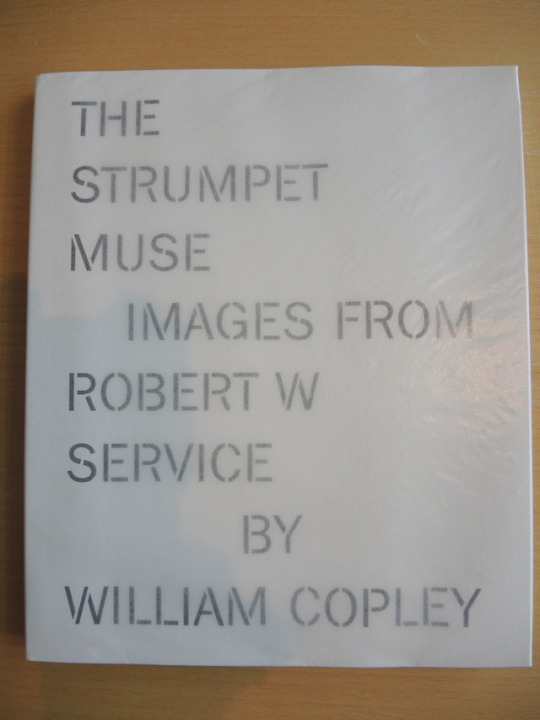

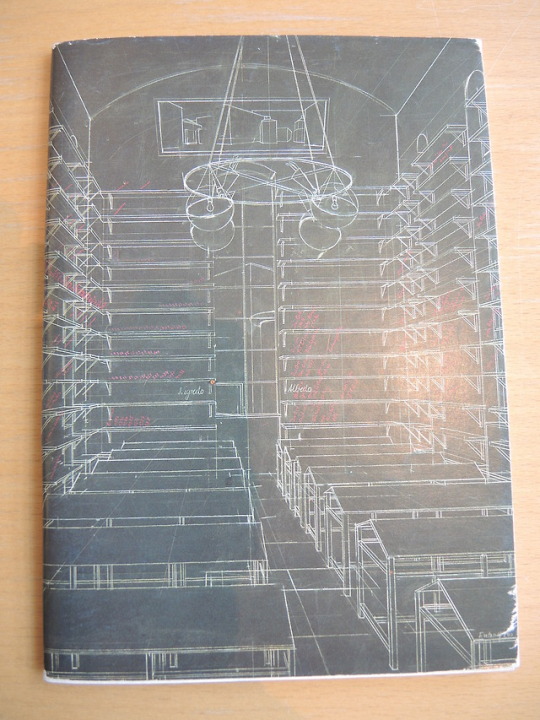
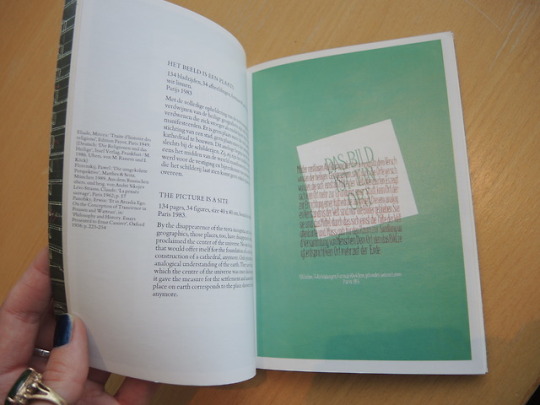
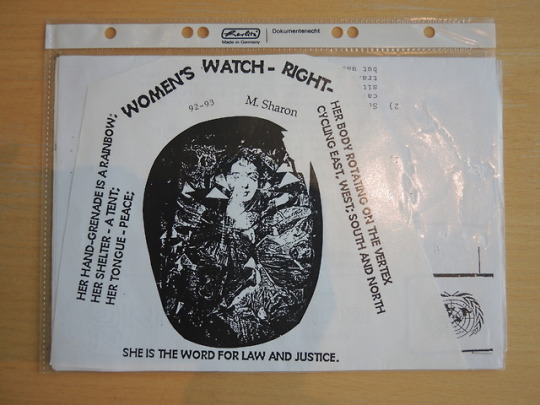
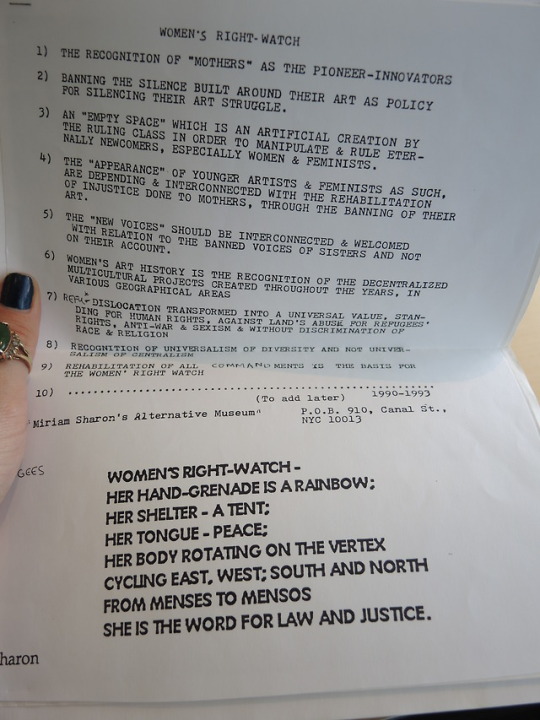

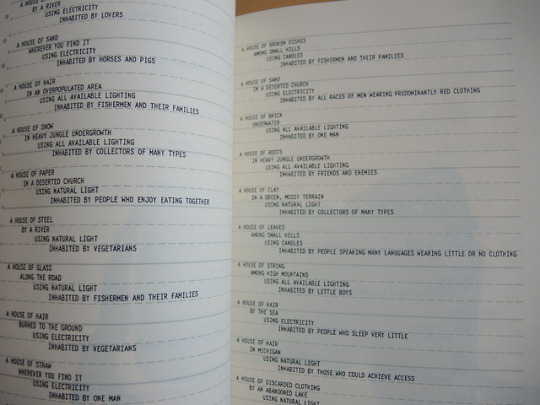
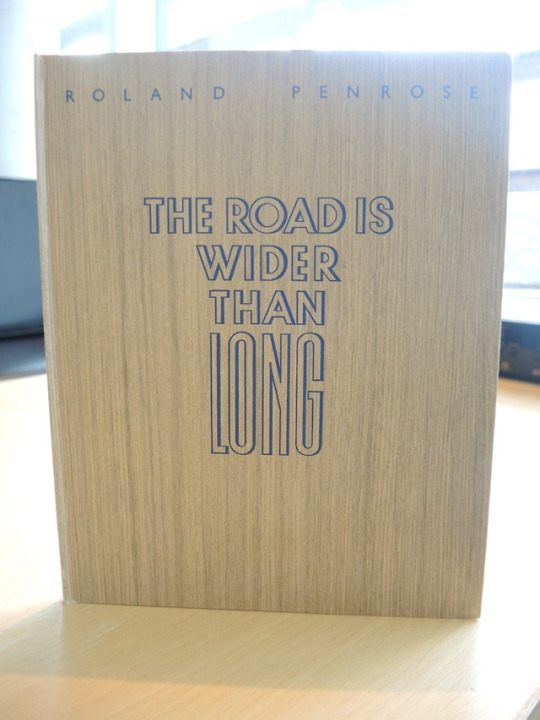
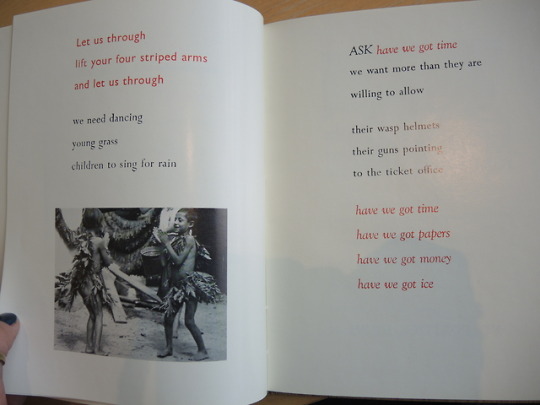
Artists’ books for the week of October 29th, 2018
The Strumpet Muse : Images from Robert W Service by William Nelson Copley- Koln; Hannover: Verlag der Buchhandlung Walther Konig Koln, 1995
Thomas Huber books by Thomas Huber- Eindhoven: stedelijk van Abbemuseum, 1991
Women's watch-right by Miriam Sharon- Koln & Vendee : 1993
Frog peak anthology by Carter Scholz- Hanover, NH : Frog Peak Music, 1992
Sure as death by Willyum Rose- Rhinebeck, NY: Space Heater Editions, 1986
#Artists' Books#Art Books#Books#Artists' book Display#Book Display#Art Display#Book Collection#Artists' Book Collection#Artists' on Tumblr#library art#library displays#William Nelson Copley#Thomas Huber#Miriam Sharon#Carter Scholz#Willyum Rose#Books Diplay#Paul D Fleck library and Archives#Banff Centre Library#Paul D Fleck Library#Banff Library
4 notes
·
View notes
Text
>

Woensdag met Denies
Dat Nederlandse musea nog lang niet inclusief zijn is geen verassing. Musea moeten een afspiegeling zijn van de samenleving, maar zijn vooral gefocust op witte, hoogopgeleide en mobiele bezoekers. Maar in Nederland bestaan zoveel mensen die afwijken van die ‘norm’. Vanwege hun beperking, hun seksuele geaardheid, hun culturele achtergrond, hun financiële situatie of hun familiesamenstelling. Hoe gaan Nederlandse musea om met de rol van vertegenwoordiger van cultuur en zien we al eindelijk verandering in het eenzijdig publiek wat musea aanspreken?

Het Nederlands fotomuseum in Rotterdam wil met de tentoonstelling ‘Sterke verhalen uit de rijke collectie van Het Nederlands Fotomuseum’ samen met curator Guinevere Ras, gespecialiseerd in museale meerstemmigheid, een inclusief beeld laten zien van de Nederlandse samenleving. Zo zien we daar een selectie van het werk van Maria Toby. Met haar foto’s, gemaakt in de Rotterdamse wijken Crooswijk en het Oude Noorden, laat zij een beeld zien van het dagelijks leven van families met een migratie-achtergrond, dat nou eens niet problematisch is. Zij fotografeerde Turkse en Surinaamse gezinnen in de jaren zeventig en tachtig, in hun huiskamer, uit het raam hangend of op straat. Daar kun je je als bezoeker met een migratie-achtergrond tenminste toe verhouden. Ook richt Het Nederlands fotomuseum zich op educatie, ze werken samen met scholen met leerlingen die niet vanzelfsprekend in musea komen. Ook vindt Het Nederlands Fotomuseum het belangrijk om een diverse personeelssamenstelling te hebben. Zo hopen zij dat inclusiviteit in het DNA van het museum gaat zitten.

Maria Toby, 1978
Ook Het Rijksmuseum doet in 2016 een moedwillige poging tot inclusiviteit. Zij besloten om de titelkaartjes te moderniseren en hebben geprobeerd termen te weren die als discriminerend worden ervaren. De foto ‘N* voor Stuiverskerkhof’ veranderde zo eerst in ‘Surinaams meisje voor Stuiverskerhof’ en eindigde als ‘Meisje voor Stuiverskerkhof’. Op het eerste gezicht een goede daad, maar wanneer je bedenkt dat dit anderhalve eeuw nadat Nederland de slavernij heeft afgeschaft pas gebeurt, weet je zeker dat er nog een hoop werk aan de winkel is. Daar in tegen is weer te zeggen dat een museum ook vaak een tentoonstelling is van de geschiedenis. Ontkennen wij de Nederlandse koloniale geschiedenis wanneer wij bovengenoemde termen proberen zo inclusief mogelijk te maken? Nederland is als sinds heugenis alles behalve inclusief en dat is tegelijkertijd ook iets wat wij niet mogen vergeten.

STUDIO I van het Stedelijk Museum Amsterdam en het Van Abbemuseum in Eindhoven streeft naar het geven van een duurzame impuls aan de toegankelijkheid en inclusie binnen het culturele veld. STUDIO I wil inspireren, informeren en verbinden. Zij beseffen dat het creëren van een meer inclusieve cultuursector niet over een nacht ijs gaat en bieden samenwerkingen die leiden tot een duurzaam resultaat. Inclusiviteit bereik je niet door een eenmalige tentoonstelling, maar door het bieden van innovatieve programma’s ontwikkeld voor en door mensen voor wie een museumbezoek niet vanzelfsprekend is. Bijvoorbeeld het programma ‘Ongehoord Boijmans’ in het Boijmans van Beuningen in Rotterdam waar Selena en Gera, beide doof, rondleidingen geven in hun moedertaal, namelijk: de Nederlandse Gebarentaal. STUDIO I faciliteert intensieve trainingstrajecten om tot een zo duurzaam mogelijke samenwerking te komen. Het doel in dit project is kunst en cultuur toegankelijk maken voor doven en slechthorende. Maar ook dit project is nog niet zo inclusief als het uiteindelijk moet worden. Het museum is in samenwerking met STUDIO I bezig met het onderzoeken in hoeverre er schrijftolken ingezet kunnen worden bij rondleidingen voor slechthorende en laatdoven die de Nederlandse Gebarentaal niet voldoende beheersen. Zo wordt Ongehoord Boijmans voor twee doelgroepen binnen de dovencultuur toegankelijk gemaakt.

Foto: Aad Hogendoorn
Er wordt de laatste jaren hard aan de weg getimmerd als het gaat om inclusiviteit binnen de Nederlandse musea, maar er is nog een lange weg te gaan. In dit artikel is nog niet eens gesproken over de ondervertegenwoordigde vrouwelijke kunstenaars, seksuele geaardheid, financiële situaties, sociale achtergrond, mobiele beperkingen en ga zo maar door. We zijn er nog lang niet en we weten niet of we ooit volledig inclusieve musea kunnen bezoeken (en of dat dan niet onze geschiedenis ontkend), maar de eerste stappen zijn gezet.
Bronnen:
Studio-inclusie.nl
Nederlandsfotomuseum.nl/blog-inclusiviteit
Mistermotley.nl/tendens/het-inclusieve-museum
1 note
·
View note
Text

Jan Vercruysse, Labyrinth & Pleasure Garden n°7, [1994-1995], 1994 [Van Abbemuseum Eindhoven. © Jan Vercruysse]

#graphic design#art#drawing#geometry#pattern#labirinto#jan vercruysse#stedelijk van abbemuseum#stedelijk van abbemuseum eindhoven#van abbemuseum eindhoven#1990s
36 notes
·
View notes
Text
Marina Abramović: Personal Archaeology

[Originally Posted on 4 May 2010]
Marina Abramović (born in 1946 in Belgrade, Yugoslavia), is without question one of the most important artists of our time. She was awarded the Golden Lion for Best Artist at the 1997 Venice Biennale for her extraordinary video installation/performance piece Balkan Baroque. I was fortunate enough to have a lengthy conversation with the artist, just days before she began her latest ongoing performance, The Artist Is Present at MoMa in NYC. She is an incredibly fascinating woman, dedicated to her craft but always in pursuit of taking her work, moreover, herself to the next level pushing all boundaries aside.
Personal Archaeology a new show opening at the Sean Kelly Gallery in New York City, is an intimate look into the development of Abramović as a seminal artist, beginning with her historic performance work of the 1970s through to her most recent work from 2010. Private Archaeology, a sculpture exhibited in the first gallery, has not been shown before in the US. This highly personal work from 1997-99 consists of a large wooden cabinet containing numerous drawers in which artefacts from Abramović’s life are displayed. The public is encouraged to look through the drawers to view the variety of revealing objects and mementos that Abramović has collected, including photographs, handwritten notes and other material that has influenced her work.
The exhibition also includes an entire gallery dedicated to photographs from one of Abramović’s earliest performances, Rhythm 10, in which she stabbed a knife between her splayed fingers in rapid motion, changing the knife each time she cut her finger. She repeated this process twice; tape recording it on the first occasion so that she could mimic the movements on the second.
A selection of Abramović’s iconic photographs is installed in the main gallery, providing a visual time line of the evolution of this pioneering performance artist. Works such as Rhythm O, Lips of Thomas, Carrying the Skeleton and Cleaning the House chart the trajectory of her career over the last 40-plus years. The main gallery also includes one of her newest videos, which is a startling image of Abramović, her face covered in gold leaf, staring out at the viewer. The faint ruffling of the gold leaf is the only motion in the video and draws the viewer in close for further inspection, whereby they ultimately find themselves meeting Abramović’s direct gaze.
Her work is included in many major public collections worldwide including: The Museum of Modern Art, New York; The Solomon R. Guggenheim Museum, New York; the Musée National d’Art Moderne, Centre Georges Pompidou, Paris, France; the Stedelijk Museum, Amsterdam, Holland; the Van AbbeMuseum, Eindhoven, Holland; the San Francisco Museum of Modern Art; and the Tate Modern, London.
Personal Archaeology is running concurrently with the major MoMA exhibition, Marina Abramović: The Artist Is Present, on view at the museum until 31May. During the MoMA’s first-ever retrospective of a performance artist, Abramović is performing daily during the entire run of the exhibition, for a total of over 700 hours, in her longest solo piece to date. Abramović sits in silence in the museum’s atrium during public hours, inviting visitors to take the seat across from her for as long as they choose within the time frame of the museum’s hours of operation.
Personal Archaeology opens May 8 and continues until 19 June at the Sean Kelly Gallery, NYC www.skny.com
To read more about Abramović, read the current issue of Aesthetica – for an in-depth interview with the artist.
Image © Marina Abramović Golden Mask (2009) courtesy Sean Kelly Gallery.
0 notes
Text
New Sculpture by Richard Serra to Be Unveiled at Gagosian Le Bourget
September 14, 2021
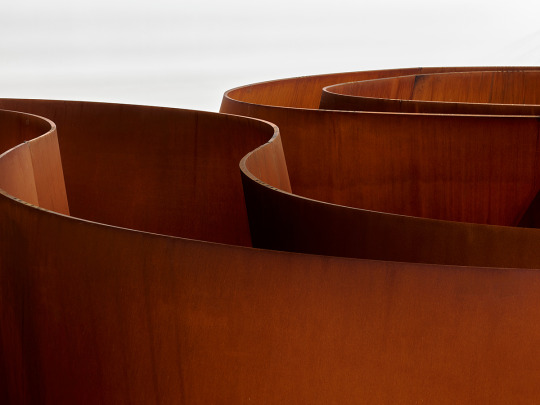
RICHARD SERRA Transmitter
Opening September 18, 2021 26 avenue de l’Europe, Le Bourget __________ I consider space to be a material. The articulation of space has come to take precedence over other concerns. I attempt to use sculptural form to make space distinct. —Richard Serra Gagosian is pleased to present a new sculpture by Richard Serra. Made of weatherproof steel, Transmitter (2020) measures 4 meters in height, 17.7 meters in width, and 18.2 meters in length, and will be installed in Gagosian Le Bourget’s vast main exhibition space. In collaboration with the gallery, the Centre Pompidou in Paris will present a three-day retrospective of Serra’s films and videos, drawn from the museum’s collection as well as from the collection of the Museum of Modern Art, New York. This is the first time that all of the artist’s film and video work will be shown together in Paris. The screenings will be held in Cinéma 2 of the Centre Pompidou.
Richard Serra was born in 1938 in San Francisco, and lives and works in New York. Collections include Centre Pompidou, Paris; Musée d’Art Contemporain, Bordeaux, France; Guggenheim Bilbao, Spain; Kröller-Müller Museum, Otterlo, Netherlands; Stedelijk Van Abbemuseum, Eindhoven, Netherlands; Dia Art Foundation, New York; Museum of Modern Art, New York; National Gallery of Art, Washington, DC; Carnegie Museum of Art, Pittsburgh; San Francisco Museum of Modern Art; and Los Angeles County Museum of Art. Serra participated in Documenta 5, 6, 7, and 8; and the 39th, 44th, 49th, and 55th editions of La Biennale di Venezia. In 2008 he presented Promenade (2008) for the Monumenta commission at the Grand Palais, Paris; and in 2005, The Matter of Time (1994–2005), a series of eight sculptures, was installed permanently at the Guggenheim Bilbao. In 2014, East-West/West-East (2014) was installed permanently in the desert of the Brouq Nature Reserve, Qatar. Serra has received numerous accolades, including a Fulbright Grant (1965); National Endowment for the Arts Fellowship (1974); Carnegie Prize (1985); Praemium Imperiale, Japan Arts Association (1994); Leone d’Oro, La Biennale di Venezia (2001); and Alexej von Jawlensky Prize, City of Wiesbaden, Germany (2017). Serra was made Chevalier de l’Ordre des Arts et des Lettres in 1985, and Officier de l’Ordre des Arts et des Lettres in 1991. In 2008 he was made Commandeur de l’Ordre des Arts et des Lettres, and in 2015 he was appointed Chevalier de l’Ordre national de la Légion d’honneur for his “exceptional contribution to art, past, present, and future.” In September 2018, Serra received the J. Paul Getty Medal. Since 1983, Gagosian has presented thirty-seven major exhibitions of Serra’s work in the United States and Europe, including New Sculpture and Drawings (New York, 1991–92); Intersection II (New York, 1993); New Sculpture (New York, 1996); Switch, which inaugurated the gallery’s location at West 24th Street, New York, in 1999; Torqued Spirals, Toruses, and Spheres (New York, 2001); Wake, Blind Spot, Catwalk, Vice-Versa (New York, 2003); Rolled and Forged (New York, 2006); Sculpture (London, 2008); Blind Spot/Open Ended (New York, 2009); Junction/Cycle (New York, 2011); New Sculpture Inside Out (New York, 2013–14); Backdoor Pipeline, Ramble, Dead Load, London Cross (London, 2014–15); Above Below Betwixt Between, Every Which Way, Silence (for John Cage), Through and NJ-1 (New York, 2016); NJ-2, Rounds: Equal Weight, Unequal Measure, Rotate (London, 2016–17); Reverse Curve and Forged Rounds (New York, 2019–20). _____ Richard Serra, Transmitter, 2020, weatherproof steel, 13 feet 2 inches × 58 feet 2 inches × 59 feet 10 inches (4 × 17.7 × 18.2 m), plates: 2 inches (5 cm) thick © 2021 Richard Serra/Artists Rights Society (ARS), New York. Photo: Thomas Lannes
13 notes
·
View notes
Text
Grote spelers in de wereld van Design
Museumnacht Amsterdam: Een grote speler voor het algemene publiek is de Museum nacht in Amsterdam. Dit is een jaarlijks evenement waarop bijna alle musea en galerieën haar deuren opent op een nieuwe en spannende manier. De museum nacht geeft bezoekers een kans om kennis te maken met kunst op een unieke en spannende manier. Persoonlijk ben ik erg fan van de museumnacht. Met mijn museum kaart ga ik vaak naar Amsterdam om te kijken naar nieuwe exposities en tentoonstellingen, echter biedt de museumnacht mij een nieuw perspectief op kunst. Zo is er een disco in het Rijksmuseum, door grote lichten en een massaal aantal dansende mensen zie je de entree op een compleet andere manier. Ook zijn er verschillende evenementen en routes binnen de musea’s georganiseerd speciaal voor het evenement. Bands spelen in het Stedelijk en in Artis kan je genieten van exposities in het aquarium met een glaasje glühwein. Door de toegankelijkheid en de presentatie van het evenement is het deelnemen voor ieder persoon interessant. Mensen hebben de mogelijkheid om kennis te maken met kunst en cultuur op nieuwe manier en raken misschien wel voor het eerst echt geprikkeld. Al vanaf de start in 2000 is het een groot succes en het feit dat het een grote speler blijkt te zijn zie je aan de snelle kaartverkoop, uitverkocht in slechts één dag.
Dutch Design Week: Niet te missen op het lijstje van grote spelers is natuurlijk de Dutch Design Week. Voor werkveldverkenning heb ik het evenement dit jaar voor het eerst bezocht (en zeker niet voor het laatst). Gedurende de week krijgen designers de kans om hun werken aan het publiek te tonen. Het evenement is gigantisch en is verspreid door heel Eindhoven. Toen het evenement werd opgezet in 2002 deden er slechts 20 deelnemers mee, gedurende de jaren is dit aantal opgelopen tot wel 2500 designers overal uit Nederland. Het evenement zelf telt zelfs rond de 355000 bezoekers (Wikipedia-bijdragers, 2019). Op het evenement bezoek je verschillende vertoningen. Zo heb je een locatie waar de afstudeerprojecten van kunstscholen worden vertoont. Dutch Design Week focust zich met name op ontwerpen en ideeën voor de toekomst. Ieder jaar word er dan ook gekozen voor een onderwerp. Dit jaar was dit ‘If not now, then when?’ Een schreeuw naar verandering om beter om te gaan met onze planeet. Dit kan bijvoorbeeld door duurzaam en effectief gebruik te maken van materialen en technologie. Veel designers hebben hier dan ook groots op ingespeeld. Dutch Design week is een grote speler voor designers om naam bekendheid te creëren. Ieder jaar wordt er een tal aan awards uitgedeeld. Ook komen er veel kenners op het evenement af die producten kunnen promoten of kopen. Zelf was ik niet bekend in de wereld van design (los van de schilderkunst). Alleen Dutch Design Week was een fenomeen waar ik veel en vaak over had gehoord, een grote speler dus.







Exposities: Mijn laatste grote speler is klinkt misschien wat algemeen, toch ben ik erachter gekomen hoe belangrijk deze is in de wereld van de beeldende kunst. Gedurende mijn meeloopdag heb ik gesproken met veel jonge kunstenaars. Ik vroeg mij af hoe deze kunstenaars aan hun inkomsten komen en wat er voor nodig is om naambekendheid te creëren. Het steeds terugkerende antwoord was ‘exposities’.Ik spreek hier met name over korte en locale exposities. Tim vertelde mij hoe er voor hem en vele andere afgestudeerde kunstenaars vaak weinig werk te vinden is. Je bent in het begin afhankelijk van exposities. Hier moet je als kunstenaar voor gevraagd worden. Wanneer je dan ergens mag exposeren krijg je de kans om je werken aan het publiek te tonen. Wanneer je dan vaker gevraagd word en vaker mag exposeren raak je als kunstenaar steeds bekender. Voor beginnende kunstenaars is het dan ook het doel om zo veel mogelijk te exposeren. De kunst wereld is een lastige wereld en veel jongeren falen er dan ook in om na een studie daadwerkelijk rond te komen van het gene wat ze het liefste doen, kunst maken. Door samen te werken en bijvoorbeeld thema avonden te organiseren waarop meerdere kunstenaars tegelijkertijf werken vertonen en verkopen blijft men gestimuleerd door te zetten. Exposities zijn dus een essentiële speler voor kunstenaars om de buitenwereld kennis te laten maken met hun werken. Veel exposities zijn georganiseerd door scholen, collectieven maar ook op festivals zie je vaak kunstenaars exposeren. Denk aan tweetakt of Down the Rabbit Hole.
Literatuurlijst Blog:
DuurzaamBedrijfsleven. (z.d.). Stedelijk Museum ontvangt duurzaamheidscertificaat. Geraadpleegd op 21 januari 2020, van https://www.duurzaambedrijfsleven.nl/infra/25719/stedelijk-museum-ontvangt-duurzaamheidscertificaat
Smeltekop, E. (2019, 6 november). The Bag Project at Van AbbeMuseum - DUTCH DESIGN WEEK 2019. Geraadpleegd op 21 januari 2020, van http://www.studiodrift.com/news/2019/6/11/bag-project-vanabbemuseum
Terra, C. (2020, 22 januari). Tweedehands kledingwinkels schieten uit de grond. Geraadpleegd op 22 januari 2020, van https://fashionunited.nl/nieuws/retail/tweedehands-kledingwinkels-schieten-uit-de-grond/2017040428478
Wikipedia-bijdragers. (2019, 9 september). Dutch Design Week. Geraadpleegd op 22 januari 2020, van https://nl.wikipedia.org/wiki/Dutch_Design_Week
0 notes
Photo







■Amazing Book No.1
Aldo Van Eyck Works
Projects 1944-99
52 Tower Room Conversion for Prof. Loeffler, Zurich
54 Architect's Apartment, Amsterdam
56Bank Directors' Rooms, Heldring & Pierson, The Hague
58 Entrance Sign for the National Maritime Exhibition, Ahoy',
60Rotterdam Cobra Exhibition, Amsterdam / Liège
64Damme House, Amsterdam
66 Houses for the Elderly, Slotermeer, Amsterdam
68 The Amsterdam Playgrounds
82The Blue-Purple Room, Stedelijk Museum, Amsterdam 83 Hexagonal Table
84Nagele, Plan for a Rural Village on Reclaimed Land, Noordoostpolder
86Three Primary Schools at Nagele, Noordoostpolder
88 Orphanage, Amsterdam
88 The Medicine of Reciprocity Tentatively Illustrated
110 Open-Air School, Amsterdam
111 The Four Tower House, Baambrugge
114 Congress Building, Jerusalem
116 War Memorial, The Hague
117 Urban Design for Buikslotermeer, Amsterdam
120 Fashion Shop, Zurich
122 Protestant Church, 'The Wheels of Heaven', Driebergen
126 The Horizon and the Shifting Centre
127 Roman Catholic Church, The Hague
134 Sculpture Pavilion, Sonsbeek Exhibition, Arnhem
142 Maas House, Vreeland
144 Scenery for 'Labyrinth', Carré Theatre, Amsterdam 145 Town Hall, Deventer, 1966
148 Tajiri Exhibition, Stedelijk Museum, Amsterdam
150 M. Visser House, Bergeyk
153 Sanitary Facilities and Camping Site, Mijnden
156 Schmela House and Gallery, Düsseldorf
160 Verberk House, Venlo
162 The 15th Triennial Milan
164 Villa Robert van Eyck, St-Paul-de-Vence
166 Bute House, London
168 PREVI, Housing Development, Lima
174 Joost van Roojen Exhibition, Van Abbemuseum, Eindhoven
175 City Centre as Donor
176 Urban Reconstruction, Nieuwmarkt Area, Amsterdam
178 Bureau Van Eyck & Bosch, 1971-82
179 The Cube Project, Stedelijk Museum, Amsterdam
180 Projects Hannie van Eyck
180 Florist's, Utrecht
181Renovation of an 18th-Century House, Amsterdam
182 Gallery, Amsterdam
183 Gallery, Amsterdam
184 Hubertus House, Home for Single Parents and their Children, Amsterdam
188Building a House
198 Again the Prisms of my Childhood
201 Transparency
202 Pieter de Hoogh
202 The Gift of Colour
203 The Rainbow is my favourite Colour
204 G.J. Visser House, Retie
208 De Jong House, Bergen
210 Padua Psychiatric Clinic, Boekel
216 Monument for Queen Wilhelmina, The Hague
218 General Scheme for Siemens AG, Moorenbrunn
220 Protestant Church for the Moluccan Community, Deventer
226 Urban Development of Campo di Marte, La Giudecca, Venice
230 The ESTEC Complex, Noordwijk
234 Local Symmetry Winking
247 Sala de Notte, Benedictine Abbey, Catania
250 Carel Visser Exhibition, Kröller-Müller Museum, Otterlo 252 Arts Centre, Middelburg
257 Restoration of Orphanage, Amsterdam
258 Tripolis Office Complex, Amsterdam
262 Green Area with Play Facilities, Apollolaan, Amsterdam
264The Netherlands Court of Audit, The Hague
278 Museum, Nijmegen
282 The Moscow House
285 Terminal Pier, Thessaloniki Port
289 Exhibitions of Own Works and Ideas
Hardcover: 312 pages
Publisher: Birkhauser; 1 edition (September 1, 1999)
Language: English
ISBN-10: 3764360127
Dimensions: 9.7 x 1.2 x 10.9 inches
1 note
·
View note